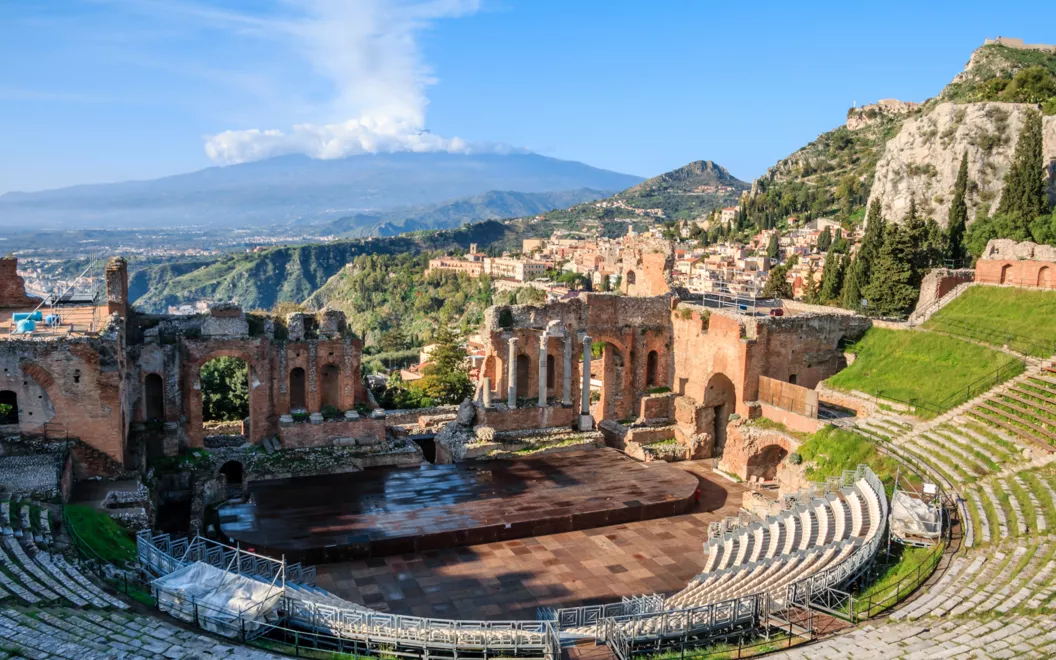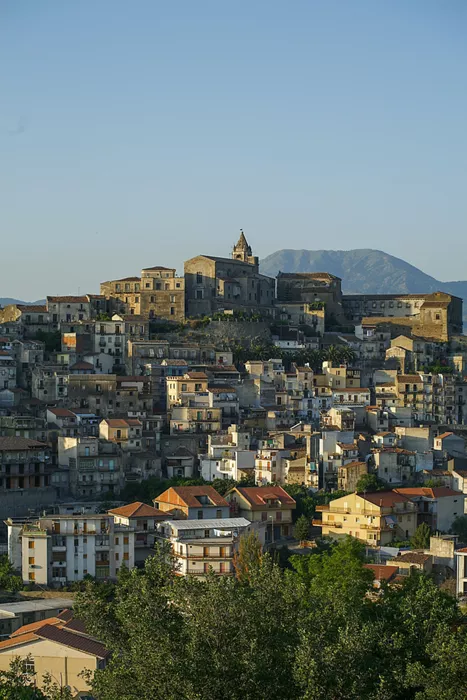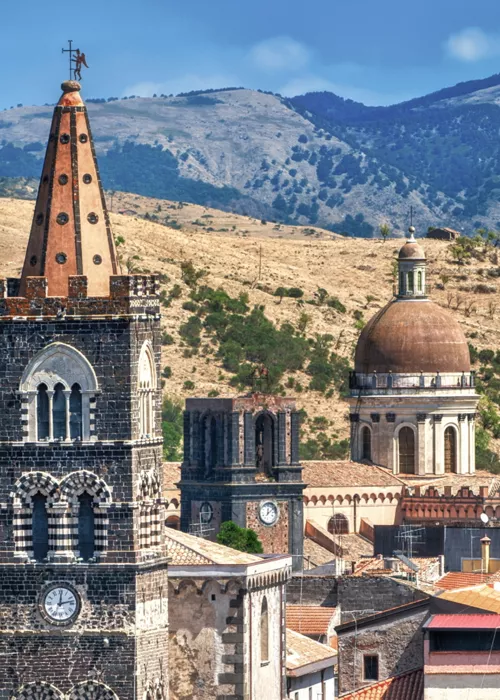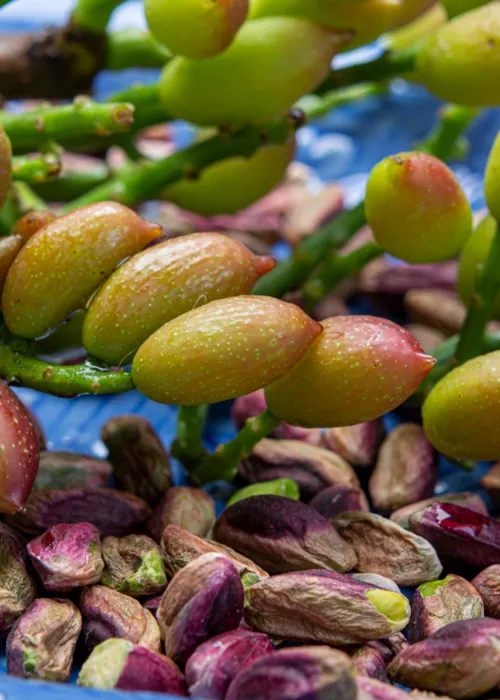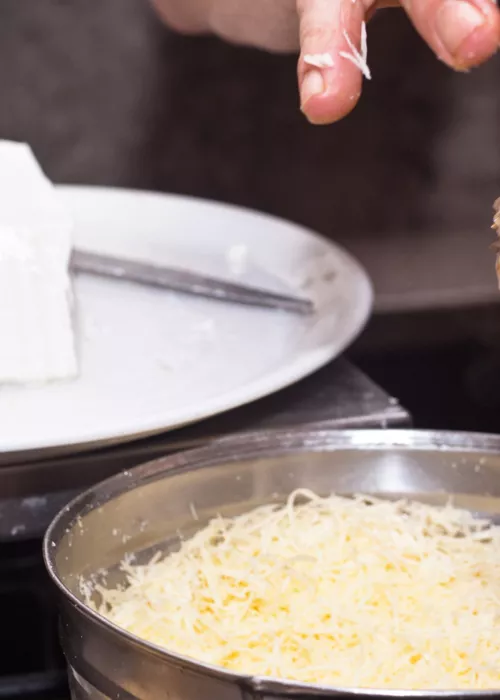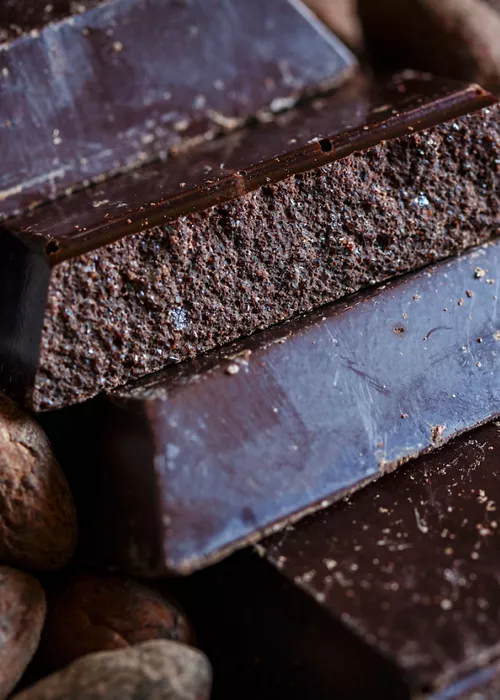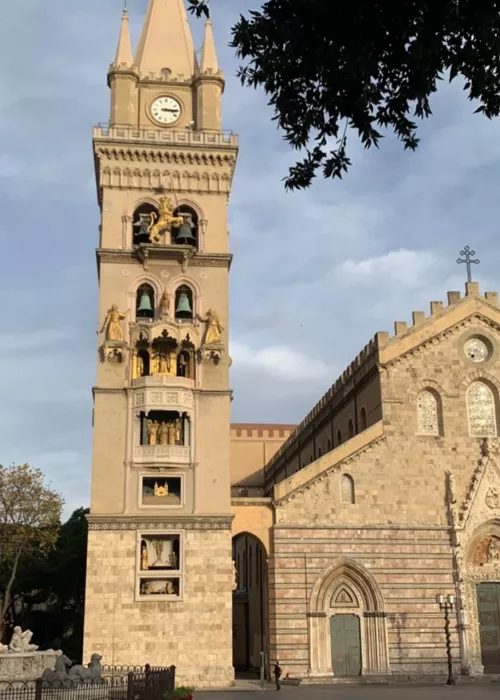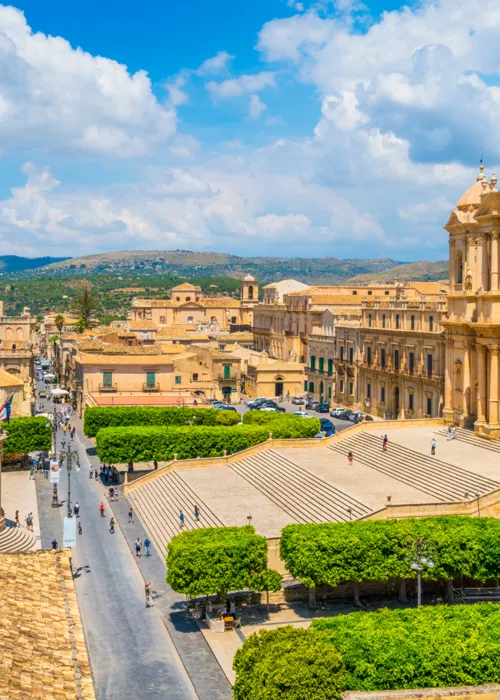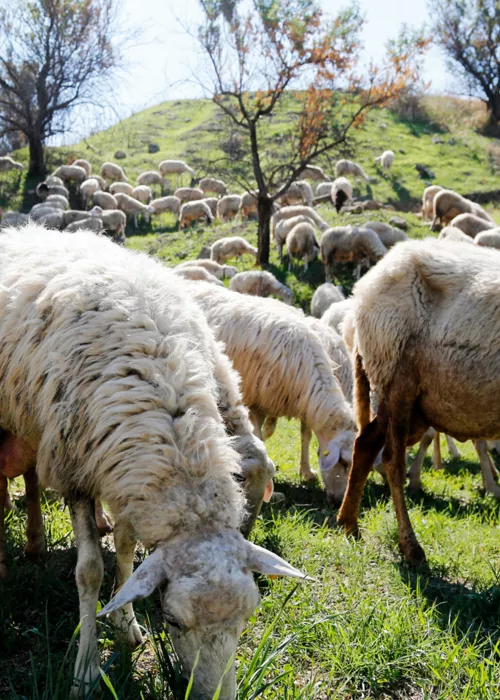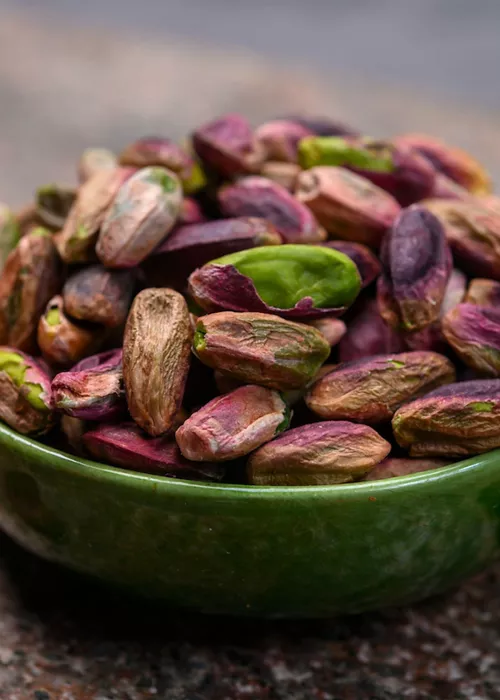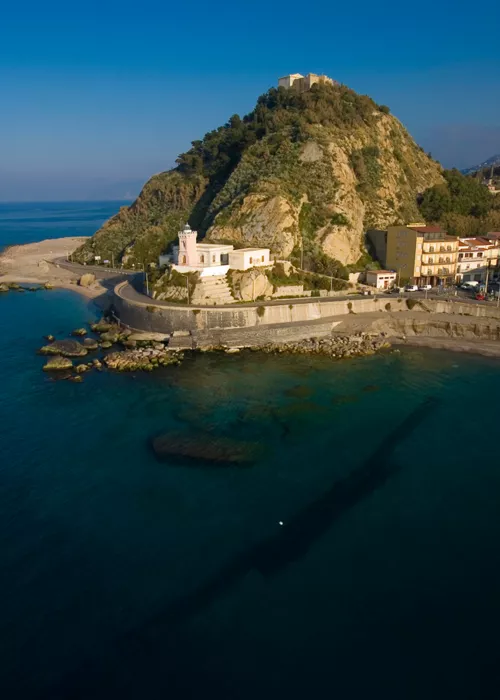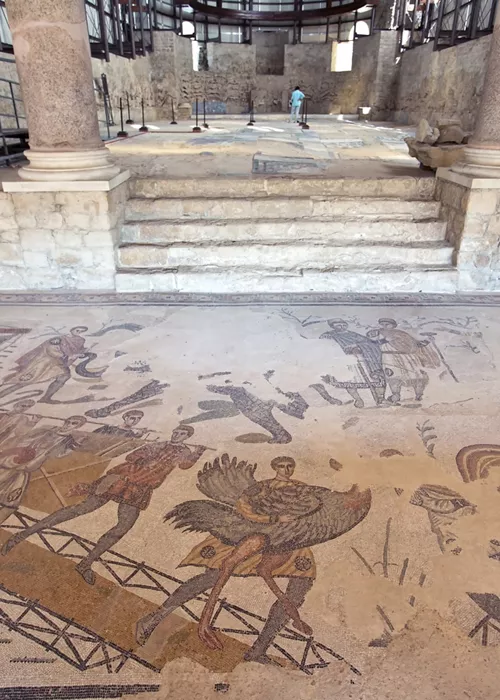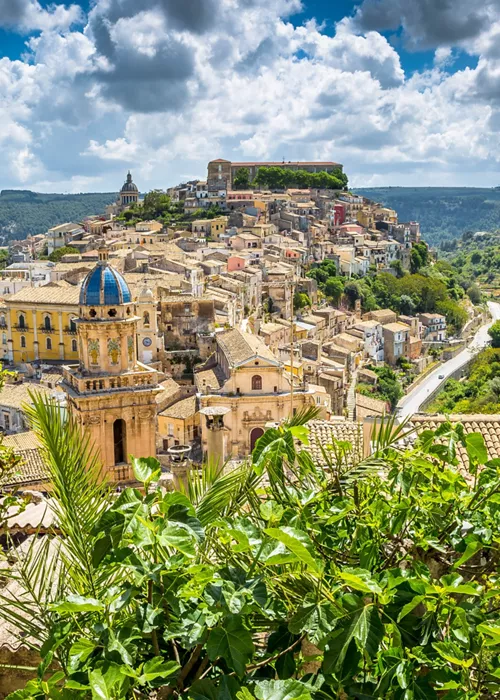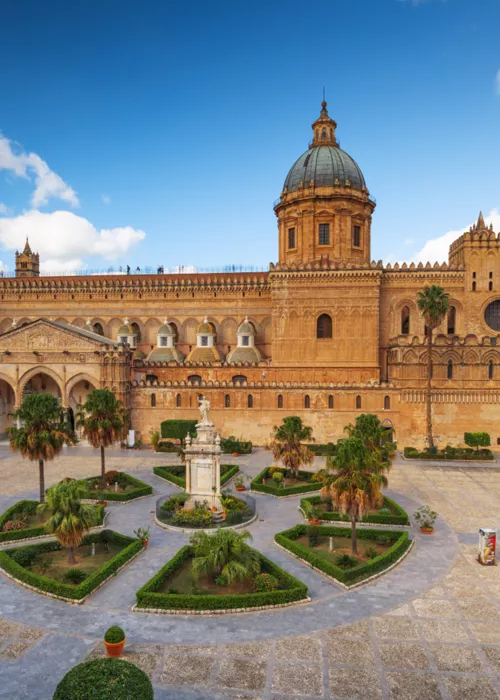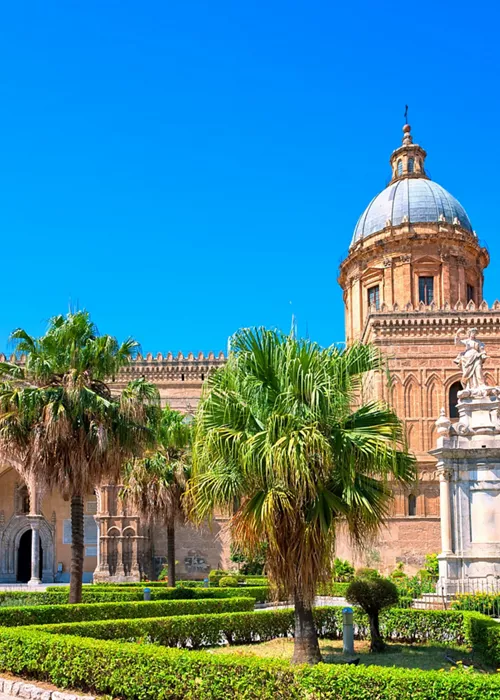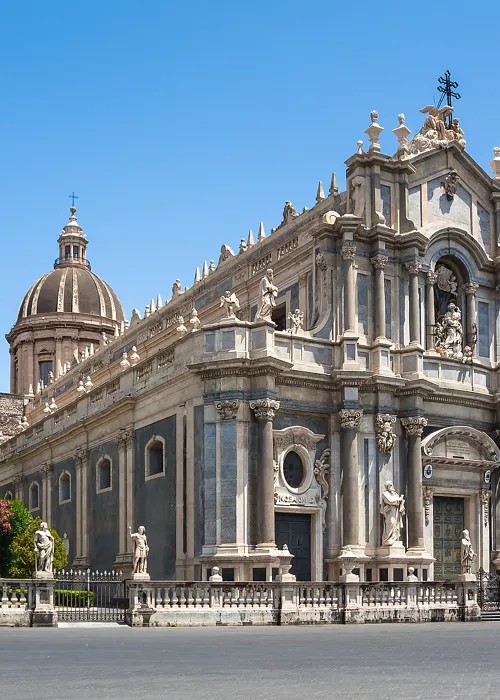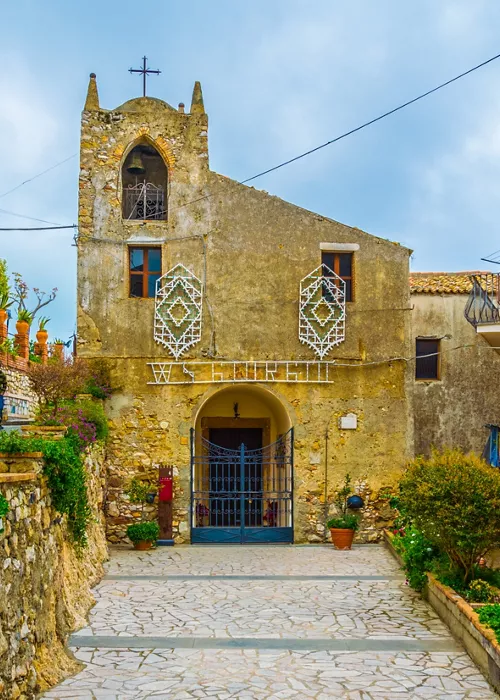Sicily, the whole world in a mouthful
3 minutes

Come to the multi-ethnic cradle of the Mediterranean diet, an intangible heritage of all mankind, to discover an encyclopaedia of flavours, an admirable interweaving of civilisations and peoples, including Phoenicians, Greeks, Romans, Arabs, Normans, Spaniards.
You will immediately be overwhelmed by the endless variety, including blood oranges, Pachino tomatoes, Bronte pistachios (or Bronte's green gold), Avola almonds, saffron, mushrooms, truffles, and honey.
Start with pasta with sardines, with its sweet-and-sour flavour hovering between sultanas, pine nuts, saffron, wild fennel and toasted breadcrumbs; or pasta alla Norma cwith tomato sauce, fried aubergines, basil and a sprinkling of salted ricotta; try the caponata but don't forget the aubergine parmigiana.
Take a trip to the Arab world by savouring Trapani cous cous, the well-known raw wheat semolina that arrived in Sicilian dishes from North Africa, combined with tasty fish soups, spices, vegetables and various meats.
Try the local meats, such as the Nebrodi black pig, or a seafood dish, such as stockfish "a ghiotta", sarde a beccafico, and not forgetting tuna, swordfish and other varieties of fish caught off the Sicilian coast; move on to arancini (or arancine, depending on where you go) of rice and then fried: panelle, chickpea flour pancakes with which rolls sprinkled with sesame seeds are stuffed. And if you want to feel like a local, taste the "ca meusa" bread, that is, with the boiled milza.
Take note of the desserts: the cannolo and the cassata, which enhance the local ricotta cheese; the granita, to be served with a hot brioche with "tuppo" (brioscia cu'tuppu), reminiscent of the chignon of Sicilian women; the Martoran fruit, made of marzipan (of Arab tradition) shaped in mock fruit and vegetables; the ice cream, of ancient traditions, which offers you an unlimited number of flavours; and the chocolate of Modica.
Accompany this endless landscape with a drop of Marsala, of Malvasia di Lipari, of Moscato di Pantelleria or di Zibibbo, without overlooking the island's other wonderful wines, such as the bianco d’Alcamo, the Rapitalà, the Corvo di Salaparuta, the Regareali, the Capo Bianco, for seafood dishes; the Nero d’Avola, the Donna Fugata, the Nerello Mascalese, and many others, to have with meat.
On the Etna wine road
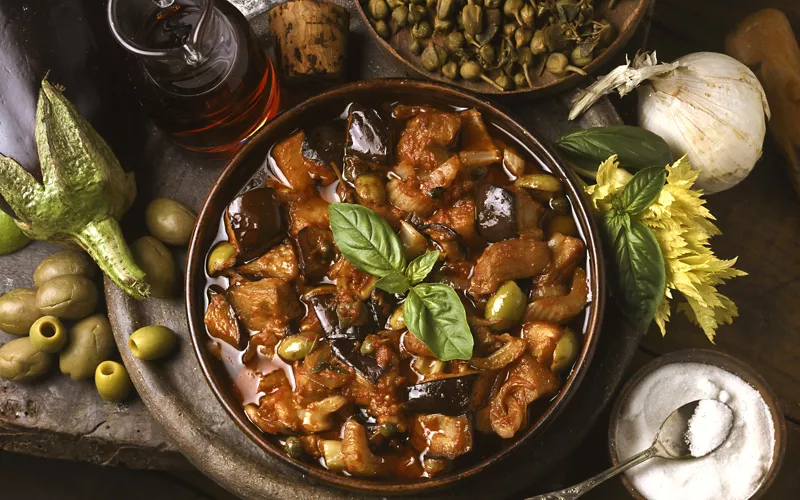
Do you love good wine? Discover the Etna Wine Road, where Etna doc is born: a three-quality wine, white, red and rosé, made from the grapes of Carricante, Catarratto, Nerello Mascalese and Nerello Mantellato.
On the way, you pass through villages of great charm, each one with many specialities to tell.
In Castiglione di Sicilia, for example, you will find nettle-filled tagghiani, wild rabbit, “sciauni" (fresh ricotta fritters) and “cuccureddi” (rice zeppole).
In Piedimonte Etneo, discover the "pera coscia dell’Etna" (Etna thigh pear) and biscuits filled with pistachio, apricot and orange preserves.
In Zafferana Etnea, in addition to the "Sicilian pizza" - fried calzone stuffed with "tuma" (soft cheese), anchovies, and pepper - savour numerous varieties of honey, such as zagara, orange, eucalyptus and prickly pear honey. And don't forget to bite into the “Sciatore", a milk biscuit covered in dark chocolate, invented in the village in the 1940s for the energy needs of skiers on the slopes of Etna.
In Randazzo, you should taste macaroni with Nebrodi black pork sauce, mushrooms, wild asparagus, pecorino cheese, nougats with almonds or pistachios; “nuvolette" and “tirrimulliri" whose main ingredient is wine cooked with walnuts, hazelnuts and a pinch of cinnamon.
Typical dishes

Pasta with sardines
You simply can't leave the island without having tasted this dish, a mixture of flavours, from the saltiness of the sardines to the sweetness of the sultanas, that will leave you open-mouthed, in the truest sense of the word.
Caponata
This bittersweet, rich and flavoursome side dish made with fried aubergines will have you in love from the first bite. An ever-present on Sicilian tables, especially in summer, its name derives from "capone", the word used in some parts of Sicily to refer to the lampuga, a prized white fish that would be dressed in a sweet-and-sour sauce. The people, unable to afford the expensive fish, switched to the cheaper aubergine and over time the use of fish disappeared, giving way to the vegetable version.

